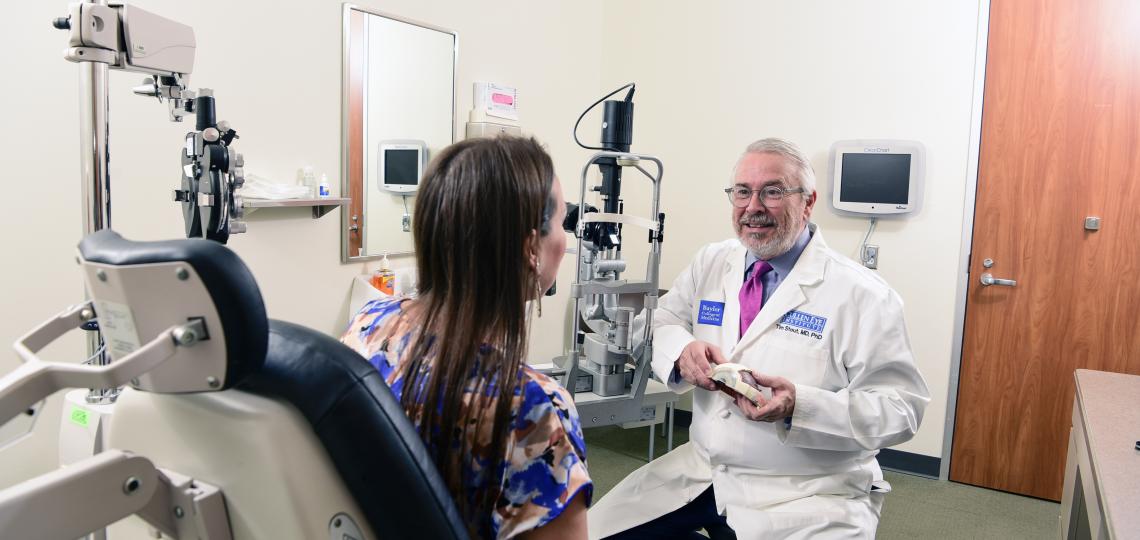Discover Andalusia's Ideal Cardiologist Clinics and Services
Discover Andalusia's Ideal Cardiologist Clinics and Services
Blog Article
The Benefits And Drawbacks of Different Refractive Surgical Procedures for Enhanced Eyecare

LASIK Surgery
LASIK surgical treatment is a generally executed refractive procedure that intends to correct vision problems such as astigmatism, farsightedness, and nearsightedness. This surgical technique has actually obtained appeal as a result of its performance in providing clients with clearer vision and minimizing their reliance on glasses or get in touch with lenses. Throughout the treatment, a slim flap is produced on the cornea, and a laser is utilized to reshape the underlying tissue, fixing the refractive error. The flap is then repositioned, allowing for quick healing and minimal discomfort for the client.
One of the key advantages of LASIK surgical procedure is the fast improvement in vision experienced by numerous patients. It is necessary for people taking into consideration LASIK surgery to go through a comprehensive examination by an eye care expert to establish if they are suitable prospects for the procedure.
PRK Procedure
The PRK treatment, additionally recognized as Photorefractive Keratectomy, is a kind of refractive surgery that intends to fix vision problems comparable to LASIK surgical procedure. Unlike LASIK, which entails developing a flap in the cornea, PRK functions on the surface area layer of the cornea.
One of the benefits of PRK over LASIK is that it gets rid of the risk of flap-related problems given that no flap is developed throughout the surgical treatment. Despite the longer recovery duration, PRK can be an appropriate option for people looking for vision modification surgery.
SMILE Surgery
A cutting-edge refractive surgical procedure method acquiring popularity in the area of ophthalmology is SMILE Surgical treatment. Small Laceration Lenticule Extraction (SMILE) is a minimally intrusive treatment that fixes vision by improving the cornea utilizing a femtosecond laser. Unlike traditional LASIK surgical procedure, SMILE Surgical treatment involves producing a small incision in the cornea to extract a lenticule, which leads to less interruption to the corneal structure and possibly faster healing times.
One of the key advantages of SMILE Surgical procedure is its ability to deal with nearsightedness (nearsightedness) and astigmatism with high accuracy, leading to excellent visual end results for clients. The minimally invasive nature of the procedure additionally decreases the threat of issues such as completely dry eye syndrome, making it a desirable option for people looking for refractive surgical treatment.

LASEK Method
Having discovered the benefits and factors to consider of SMILE Surgery, an additional notable refractive surgical treatment technique worth checking out is the LASEK Method. LASEK, which represents Laser-Assisted Subepithelial Website Keratectomy, is a form of laser eye surgical procedure that aims to deal with refractive errors such as nearsightedness (nearsightedness), hyperopia (farsightedness), and astigmatism.
Unlike LASIK, LASEK does not entail producing a corneal flap. Rather, during a LASEK procedure, the surgeon utilizes a watered down alcohol solution to loosen the slim outer layer of the cornea, understood as the epithelium.
One of the key advantages of LASEK is that it can be appropriate for people with slim corneas who may not be great prospects for LASIK. Additionally, LASEK commonly leads to very little post-operative pain and a quicker recovery time compared to PRK. Nevertheless, the aesthetic recuperation process with LASEK may be somewhat longer than with LASIK.
Implantable Get In Touch With Lenses
Implantable Call Lenses supply a long-term vision adjustment service for people looking for a choice to typical contact lenses or glasses. These lenses, also called phakic intraocular lenses, are surgically inserted into the eye to deal with refractive mistakes such as nearsightedness (nearsightedness), hyperopia (farsightedness), and astigmatism. cardiologist andalusia. Unlike conventional contact lenses that sit on the surface of the eye, implantable contact lenses work within the eye itself, providing clear vision without the need for daily maintenance or removal
Among the vital benefits of implantable call lenses is their durability. As soon as placed, they can continue to be in the eye indefinitely, offering regular and steady vision modification. Furthermore, these lenses can be an exceptional choice for individuals who are bad prospects for laser eye surgical procedure or that choose a relatively easy to fix vision adjustment procedure.
Nonetheless, implantable get Click Here in touch with lenses do bring some risks, consisting of the capacity for cataracts or increased eye pressure. It is essential for individuals considering this option to speak with an eye treatment specialist to figure out if implantable get in touch with lenses are the right selection for their certain requirements and eye health.
Verdict
In final thought, each kind of refractive surgery has its very own advantages and downsides. LASIK surgery is prominent for its fast recovery time, while PRK treatment may be appropriate for people with thin corneas.

Overall, SMILE Surgical treatment presents an encouraging option for people looking to enhance their vision with refractive surgical procedure.
Report this page